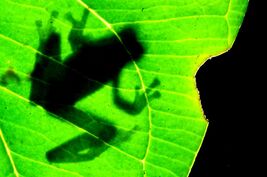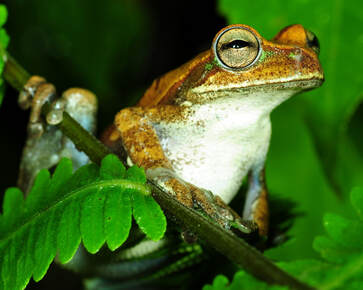

 The new paper, titled "After the epizootic: Host–pathogen dynamics in montane tropical amphibian communities with high prevalence of chytridiomycosis" appeared today in Biotropica. In the cloud forests of the Kosñipata Valley of Manu National Park, where chytrid infection (Bd) is highly prevalent, we have monitored frog communities since 1996. An epizootic of chytridiomycosis caused the disappearance of 35% of species richness in the early 2000s. In this study authored by former Ms student Brandon LaBumbard (now PhD student at UMass), and coauthored by current PhD candidate Alex Shepack, we investigated the post‐epizootic Bd prevalence and infection intensity within the remnant amphibian community from 2008 to 2015, and modeled Bd dynamics as a function of species, season, reproductive mode, life stage, and elevation. Prevalence was higher in 2012–2015 than in 2008–2009, but overall prevalence has remained fairly constant (~50%) post‐epizootic. We found that while prevalence decreased with elevation during the wet season, it increased with elevation during the dry season, potentially due to seasonal changes in temperature and precipitation.  Our data suggest that the few stream‐breeding species that survived epizootics, such as Boana gladiator (see picture here), might facilitate Bd infection in sympatric susceptible hosts (most of which are terrestrial‐breeding species) by helping keep Bd in the environment, and by acting as reservoir hosts. Reservoirs thereby lead to continual declines of susceptible species long after initial Bd emergence, warranting the need for long‐term monitoring to understand population and species extinction risks in remnant populations in areas where Bd is still present and causing disease. We would like to give special thanks to Peru Verde and the staff at Gallito de las Rocas lodge for their support and for allowing us to work at the San Pedro biological station.
0 Comments
|
Archives
June 2024
CATENAZZI LABNews from the lab Categories |